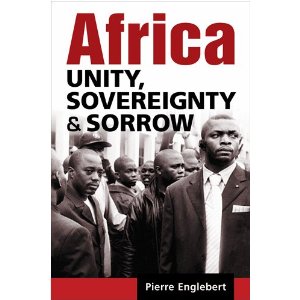|
Reviewed by Harvey Glickman, Ph.D., Professor Emeritus, Haverford College Despite decades of ethnic conflict, cross-border rebellions, disputed elections, and retarded development, African states remain whole. Somewhat glibly reported in a condition of “state failure,” African states, with a few exceptions, do not disintegrate. In this book, brimming with uncommon sense, Engelbert offers an explanation. In his view, state authority — even contested and in disrepair — serves as a resource worth acquiring and asserting. At the lowest level, functionaries, although unpaid for months, can extend patronage and extort bribes. At the highest level, state rulers receive rents from natural resources and international assistance for shortfalls in services. Leaders wearing the mantle of state sovereignty sit at the pinnacle of a great pyramid of “prebendalism,” attaching scores of supporters for purposes of extraction in return for support. The key point is that international recognition of juridical sovereignty translates into domestic legal command. So we encounter – and perhaps understand — the paradox of African states’ failure to provide for the domestic tranquility and welfare, yet able to resist just about every challenge to state integrity. Englebert, a professor of political science at Claremont College in California, brings considerable field experience and teaching/research to this study. Fluent in both French and English, he is able to range freely over many territories for several first- hand inquiries into sub-nationalisms and apparently separatist movements and why they fail. The central point is that African states did not emerge from the bottom up, from historical “tribal” entities. Instead they reflect colonial territorial impositions. Why do they not revert to self-interested, historical indigenous groupings? In what he labels “separatist illusions,” Englebert creates three categories: “self-indetermination,” – illustrated by the cases of Casamance in Senegal, Tuaregs in Algeria, Mali, Niger and Libya, and the southern Sudanese; “selfless-determination” — illustrated by Eritrea, Ethiopia and Somaliland; and a “calculus of compliance [that] occasionally no longer falls on the side of sovereignty.” (p. 155) The last-named category includes the apparent exceptions of Ethiopia and Eritrea. In the first category, separatists are not really fighting for secession, but for local control of the institutions of the state. The second case covers a separatist movement claiming autonomy on the grounds that its territory was once a colony. This is not an instance of self-determination, but rather an attempt to re-create statehood based on imposed authority previously regarded as illegitimate. In the one internationally recognized case of secession, Eritreans re-asserted their separate existence as an Italian colony before annexation-integration by Ethiopia, 1952-1993. Somaliland –central Somalia – has achieved de facto autonomy in recent years in the wreckage of the Somalian state, but goes unrecognized by international juridical standards; it also is a legacy of British (colonial) Somaliland. Southern Sudan may yet attain independence, resisting decades of “Arabization” by the Khartoum regime. Tellingly, southern Sudan was administered as a separate region by British rulers until just before independence. Other separatist movements, not based on previous colonies, e.g., in Katanga (Congo), Biafra (Nigeria), Barotseland (Zambia), Buganda (Uganda), all settled for degrees of limited local influence within the colonially-defined state envelope. Finally, and “paradoxically, Ethiopia’s separatist deviance might have something to do with its successful resistance to colonization” (p. 179) Ethiopia as a state developed through its own imperial expansion into territories adjacent to its Amharic heartland. Generously and invaluably, instead of claiming pioneer status in this line of inquiry, Englebert builds on the work of other scholars in recent years, rendering his judgments more useful theoretically. For example, Neuberger’s concept of “plural softness of the African state” (from his work on “irredentism”) helps explain the state’s derivation of exogenous sovereignty, and its incapacity to impose itself on minorities. (p. 188) In claiming a causal link between international legal sovereignty and domestic authority, Englebert echoes the pioneering work of Robert Jackson (juridical sovereignty of African states) and Jackson and Carl Rosberg, Jr. on types of leadership and authority, and the more recent work of Will Reno, on the rewards to rebel leaders of the cover of juridical sovereignty. So legal command in the African state resists the erosion of state capacity that undercuts other weak states; the state’s “exchange value” (p. 7) in extracting and dominating leads to social attachment to dysfunctional state institutions. Africans endure but they suffer. What to do? In his final chapter Englebert engages in what he calls “rational policy fantasies.” Two ideas are particularly provocative. States “should no longer benefit from the automatic recognition of the rest of the world.” (p. 243) He recommends modification of the norms of recognition. The world should renounce the sanctity of sovereignty. African leaders should be made to seek domestic legitimacy. Alternatively, the international recognition of sovereign statehood could be conditioned upon “good governance.” Recognition of governments should be conditioned on a “government’s effectiveness as an agent of human protection…The argument is thus not about promoting partition but about allowing it.” African states might be”derecognized” and some would see their “sovereignty revoked.” (p.252) In the end we are challenged to separate the idea of sovereignty from welfare…a breathtaking departure for international relations theory and policy. |


 Africa: Unity, Sovereignty & Sorrow
Africa: Unity, Sovereignty & Sorrow